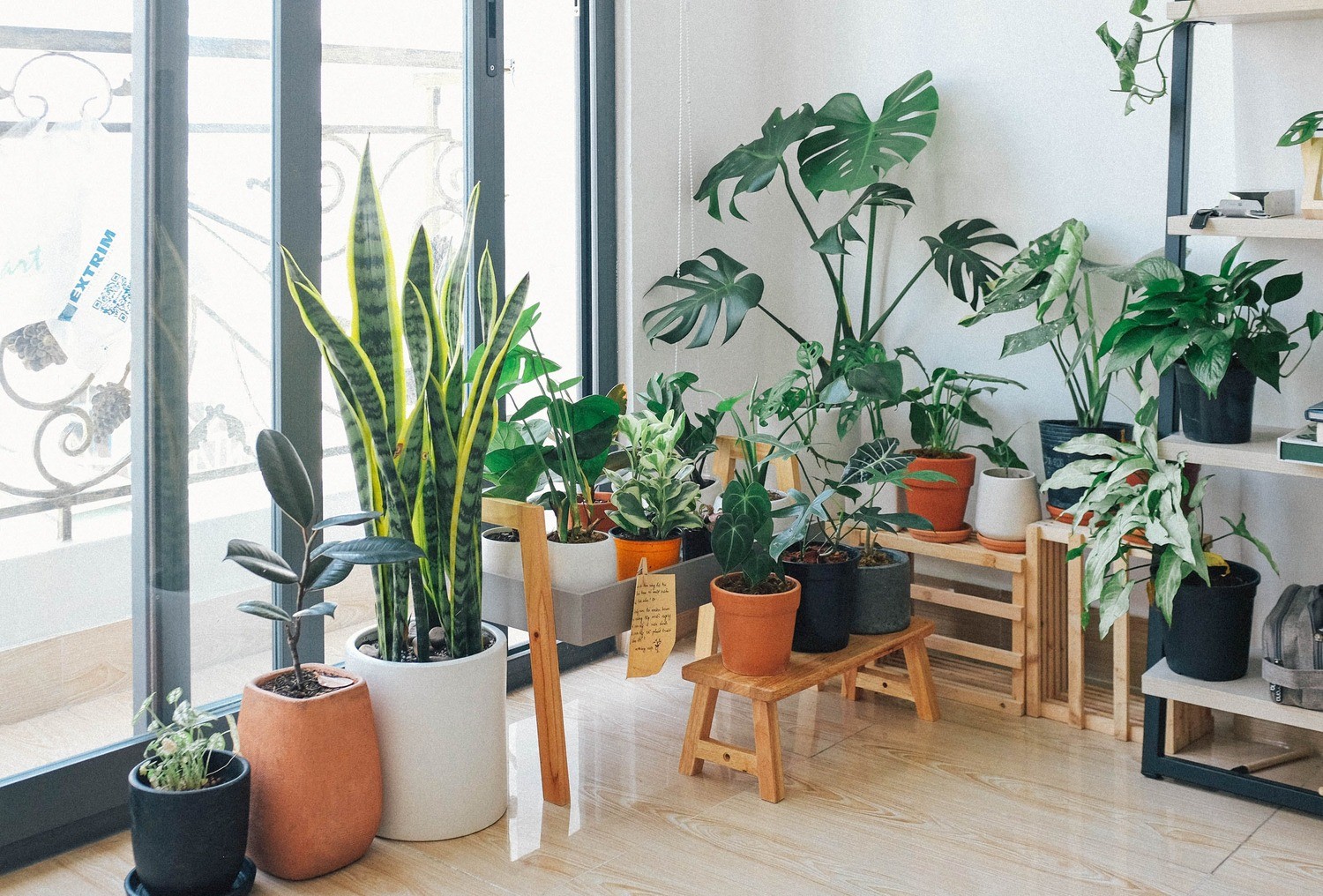Plants as sound absorbers – Natural soundproofing for better acoustics
Plants are not only an aesthetic and comfort-enhancing part of interior design – they can also play an important role in improving the acoustics of a room. By absorbing sound and reducing reverberation, plants can help create a quieter, more comfortable environment in both homes and public spaces. In spaces with hard surfaces such as glass, concrete, and tile, sound bounces easily, creating an echoey and noisy atmosphere. By strategically placing plants, you can reduce the noise level and improve the acoustic properties of the room.
Here we go through how plants work as sound absorbers, which plants are most effective, and how to best place them to optimize the sound environment.
How do plants act as sound absorbers?
Plants absorb sound through their leaves, branches, and soil. When sound waves hit the plant, some of the sound is reflected away, while another part is absorbed and dampened. The effectiveness depends on the size, density, and placement of the plant.
Factors that affect sound absorption:
The shape and size of the leaves
Large, broad, and thick leaves absorb sound better than thin, small leaves.
Density of the branches
Plants with dense branches act as sound breakers and reduce the spread of sound waves.
Pot material
Pots made of porous materials such as terracotta or wood can dampen sound better than hard surfaces such as plastic or metal.
The soil in the pot
Soil has a natural sound-absorbing effect and helps to reduce reverberation.
Which plants are best for soundproofing a room?
All plants contribute to some sound absorption, but some varieties are more effective than others. For the best possible sound absorption, choose plants with large leaves, dense branches, and thick foliage.
How to place plants for the best soundproofing
The placement of plants is very important for their sound-absorbing effect. Here are some smart placement tips:
Group plants
Placing several plants together creates a larger total surface area for sound absorption.
Place them near sound-reflecting surfaces
Walls, glass partitions, and hard floors are good places where plants can absorb and break up sound waves.
Use plants as room dividers
Tall plants can create natural sound barriers in open-plan offices and restaurants.
Place plants in corners
Corners tend to amplify sound, and plants can help absorb these reflective sound waves.
Combine with other sound-absorbing materials
Plants work well with acoustic panels, carpets, and fabrics to create a balanced sound environment.
Benefits of plants for sound absorption
Using plants to improve acoustics not only creates a quieter environment but also has other positive effects:
Air-improving properties
Plants help purify the air and increase oxygen levels.
Reduces stress and improves concentration
Perfect for offices, schools, and public environments.
Sustainable solution
Natural and environmentally friendly.
Improves the aesthetics of the room
Plants create a more pleasant and harmonious atmosphere.
By combining plants with other acoustic solutions, you can create an optimal sound environment without compromising on design.
Plants as sound absorbers
Plants are a sustainable, aesthetic, and effective solution for improving acoustics and reducing noise levels in various environments. The most effective measures include:
- Choosing plants with large leaves and dense branches for maximum sound absorption.
- Placing plants strategically near walls, windows, and corners to dampen sound reflections.
- Using plants in groups or as room dividers to create natural sound barriers.
- Combining plants with other sound-absorbing materials for well-balanced acoustics.








